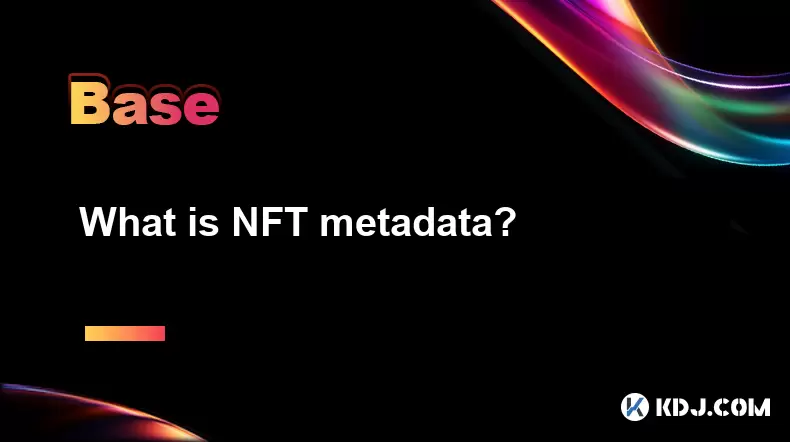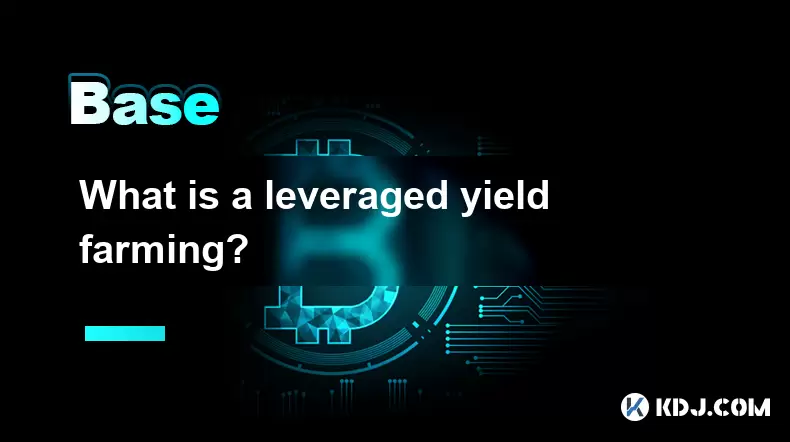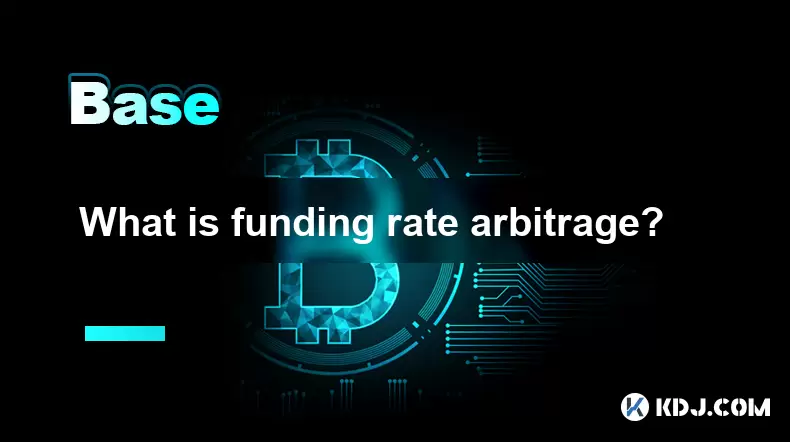-
 Bitcoin
Bitcoin $108,463.3266
-1.47% -
 Ethereum
Ethereum $2,535.8576
-3.62% -
 Tether USDt
Tether USDt $1.0006
0.02% -
 XRP
XRP $2.2352
-2.24% -
 BNB
BNB $658.1049
-0.63% -
 Solana
Solana $149.9207
-2.53% -
 USDC
USDC $0.9998
-0.07% -
 TRON
TRON $0.2857
0.45% -
 Dogecoin
Dogecoin $0.1659
-4.24% -
 Cardano
Cardano $0.5784
-3.85% -
 Hyperliquid
Hyperliquid $38.4944
-4.70% -
 Sui
Sui $2.9107
-4.19% -
 Bitcoin Cash
Bitcoin Cash $485.3637
-3.32% -
 Chainlink
Chainlink $13.3074
-4.18% -
 UNUS SED LEO
UNUS SED LEO $9.0499
0.41% -
 Avalanche
Avalanche $18.0347
-3.98% -
 Stellar
Stellar $0.2394
-2.23% -
 Toncoin
Toncoin $2.8110
-2.68% -
 Shiba Inu
Shiba Inu $0.0...01155
-3.23% -
 Litecoin
Litecoin $87.7967
-3.87% -
 Hedera
Hedera $0.1555
-2.87% -
 Monero
Monero $317.3839
-1.79% -
 Polkadot
Polkadot $3.4144
-4.90% -
 Dai
Dai $1.0000
-0.02% -
 Ethena USDe
Ethena USDe $1.0003
0.00% -
 Bitget Token
Bitget Token $4.4734
-2.29% -
 Uniswap
Uniswap $7.2556
-6.53% -
 Pepe
Pepe $0.0...09693
-7.27% -
 Aave
Aave $267.0924
-4.81% -
 Pi
Pi $0.4834
-3.31%
What is NFT metadata?
NFT metadata is the digital fingerprint containing details like name, description, image, and attributes, stored off-chain via IPFS or centralized servers, enabling uniqueness and display across platforms.
Jul 04, 2025 at 03:21 pm

What is NFT Metadata?
NFT metadata refers to the data that describes and provides information about a non-fungible token (NFT). This includes details such as the name, description, attributes, image URL, animation URL, and other properties associated with the NFT. It serves as a digital fingerprint, allowing each NFT to be unique and distinguishable from others.
Metadata plays a critical role in how NFTs are displayed on marketplaces like OpenSea, Rarible, or LooksRare. While the NFT itself resides on the blockchain, the metadata is typically stored off-chain, often using decentralized storage solutions like IPFS (InterPlanetary File System) or centralized servers.
How Is NFT Metadata Structured?
The structure of NFT metadata follows a standardized JSON format, which ensures compatibility across different platforms and wallets. A basic example of an NFT metadata file looks like this:
{
"name": "Digital Art #001",
"description": "A unique piece of digital art created by Artist X.",
"image": "https://example.com/art001.png",
"attributes": [{
"trait_type": "Background",
"value": "Blue"
},
{
"trait_type": "Eyes",
"value": "Glowing"
}
]
}
Each key-value pair inside the JSON object represents a specific detail about the NFT. The name and description fields give context, while the image field links to the visual representation. The attributes array contains traits that can influence rarity and value.
Where Is NFT Metadata Stored?
NFT metadata is not stored directly on the blockchain due to cost and efficiency concerns. Instead, it is usually hosted externally, with its location referenced by a URI (Uniform Resource Identifier) stored on-chain.
Common storage methods include:
- Centralized Servers: Many NFT projects store metadata on traditional web servers. However, this method introduces risks if the server goes offline.
- IPFS (InterPlanetary File System): A decentralized file storage system where files are addressed by content rather than location. This makes them more permanent and resistant to censorship.
- Arweave: Another decentralized storage option offering long-term data retention through a one-time fee model.
When minting an NFT, developers must decide where to host the metadata and ensure that the URI correctly points to it.
How Can You View NFT Metadata?
To inspect the metadata of an NFT, you can use several tools and methods:
- Blockchain Explorers: Tools like Etherscan allow users to view transaction details, including the token URI linked to metadata.
- OpenSea Metadata Viewer: On platforms like OpenSea, clicking on an NFT and viewing its details will show the underlying metadata.
- Custom Scripts: Developers can write scripts to fetch metadata via APIs provided by NFT marketplaces or blockchain explorers.
For example, visiting an NFT's page on OpenSea and opening the browser’s developer console may reveal API calls fetching metadata from the backend server.
Can NFT Metadata Be Changed After Minting?
Yes, NFT metadata can be changed after minting, depending on how it was implemented during contract creation.
If the metadata is stored on a centralized server or a mutable IPFS link, the creator retains control over updates. This allows for changes in descriptions, images, or traits even after the NFT has been purchased.
However, some smart contracts implement immutable metadata, meaning once the NFT is minted, its metadata cannot be altered. This is achieved by locking the base URI or hashing the metadata and storing it permanently on-chain.
Developers should clearly communicate whether metadata is updatable when launching a collection.
How to Create NFT Metadata
Creating NFT metadata involves several steps:
- Design the NFT Assets: Before generating metadata, create the images, animations, or audio files associated with each NFT.
- Generate Trait Combinations: Use software or custom code to combine different traits (e.g., background, eyes, clothing) into unique combinations.
- Build the Metadata JSON Files: For each NFT, generate a JSON file containing all relevant attributes and media links.
- Upload to Storage Platform: Upload both the media files and JSON metadata to IPFS, Arweave, or a centralized server.
- Link to Smart Contract: During deployment, ensure your smart contract references the correct URI for metadata retrieval.
Tools like HashLips NFT Generator or Moralis can automate much of this process.
Frequently Asked Questions
Q1: What happens if the metadata server goes down?
If metadata is hosted on a centralized server and it becomes unavailable, the NFT may appear broken or lack proper display on marketplaces. Using decentralized storage like IPFS helps mitigate this risk.
Q2: Is NFT metadata indexed by search engines?
Metadata hosted publicly on IPFS or HTTP endpoints can be crawled by search engines, but most NFT metadata is not intended for general web indexing.
Q3: How do NFT marketplaces read metadata?
Marketplaces use APIs or direct calls to the metadata URI stored in the NFT’s token ID. They parse the JSON file to extract and display attributes and media.
Q4: Can I verify the authenticity of NFT metadata?
Yes, by checking the hash of the metadata against what is stored on-chain (if supported by the smart contract), you can verify that the metadata hasn’t been tampered with.
Disclaimer:info@kdj.com
The information provided is not trading advice. kdj.com does not assume any responsibility for any investments made based on the information provided in this article. Cryptocurrencies are highly volatile and it is highly recommended that you invest with caution after thorough research!
If you believe that the content used on this website infringes your copyright, please contact us immediately (info@kdj.com) and we will delete it promptly.
- Bitcoin's Pattern Break: Are HODLers the Key to the Next Surge?
- 2025-07-04 18:50:12
- Bitcoin Price, Trump's Bill, and the $150K Dream: A NYC Take
- 2025-07-04 19:50:12
- Ethereum, LILPEPE, and the July Bounce: Will Pepe Steal ETH's Thunder?
- 2025-07-04 19:10:12
- Binance Institutional Loans: Unlocking 4x Leverage and Zero Interest for Whales
- 2025-07-04 19:15:12
- Bitcoin Bull Run: Analysts Eye Peak in Late 2025?
- 2025-07-04 19:20:13
- Pepe Indicators, Bullish Forecast: Can the Meme Coin Rally?
- 2025-07-04 19:25:12
Related knowledge

What is a user-generated content (UGC) NFT platform?
Jul 04,2025 at 01:49pm
Understanding the Concept of a UGC NFT PlatformA user-generated content (UGC) NFT platform is a digital marketplace or ecosystem where users can create, mint, and trade non-fungible tokens (NFTs) that represent ownership of original digital content they produce. Unlike traditional NFT platforms where creators often include professional artists or develo...

What is a token generation event (TGE)?
Jul 04,2025 at 07:14am
Understanding the Basics of a Token Generation Event (TGE)A Token Generation Event (TGE) refers to the process through which a blockchain project creates and distributes its native tokens to investors, participants, or stakeholders. This event is often associated with new cryptocurrency projects launching on platforms like Ethereum, Binance Smart Chain,...

What is a block explorer API?
Jul 04,2025 at 05:07am
Understanding the Role of a Block Explorer APIA block explorer API is a crucial interface that enables developers and users to interact programmatically with blockchain data. Unlike traditional APIs used in web services, a block explorer API specifically provides access to blockchain-related information such as transaction details, wallet balances, bloc...

What is a leveraged yield farming?
Jul 04,2025 at 09:36am
Understanding Leveraged Yield FarmingLeveraged yield farming is a more advanced form of yield farming, which itself is a popular method in the decentralized finance (DeFi) ecosystem to earn returns by providing liquidity to various protocols. In traditional yield farming, users deposit tokens into a DeFi platform and earn rewards in return, often in the...

What is open interest in derivatives?
Jul 03,2025 at 02:49pm
Understanding Open Interest in DerivativesOpen interest is a critical metric used in the cryptocurrency derivatives market, particularly when analyzing futures and options contracts. It represents the total number of outstanding contracts that have not been settled or closed by either party involved. Unlike trading volume, which counts all trades made i...

What is funding rate arbitrage?
Jul 04,2025 at 11:43am
Understanding Funding Rate Arbitrage in the Cryptocurrency MarketFunding rate arbitrage is a trading strategy employed by crypto traders to exploit differences in funding rates across various perpetual futures exchanges. In perpetual contracts, funding rates are periodic payments made between long and short traders depending on whether the price of the ...

What is a user-generated content (UGC) NFT platform?
Jul 04,2025 at 01:49pm
Understanding the Concept of a UGC NFT PlatformA user-generated content (UGC) NFT platform is a digital marketplace or ecosystem where users can create, mint, and trade non-fungible tokens (NFTs) that represent ownership of original digital content they produce. Unlike traditional NFT platforms where creators often include professional artists or develo...

What is a token generation event (TGE)?
Jul 04,2025 at 07:14am
Understanding the Basics of a Token Generation Event (TGE)A Token Generation Event (TGE) refers to the process through which a blockchain project creates and distributes its native tokens to investors, participants, or stakeholders. This event is often associated with new cryptocurrency projects launching on platforms like Ethereum, Binance Smart Chain,...

What is a block explorer API?
Jul 04,2025 at 05:07am
Understanding the Role of a Block Explorer APIA block explorer API is a crucial interface that enables developers and users to interact programmatically with blockchain data. Unlike traditional APIs used in web services, a block explorer API specifically provides access to blockchain-related information such as transaction details, wallet balances, bloc...

What is a leveraged yield farming?
Jul 04,2025 at 09:36am
Understanding Leveraged Yield FarmingLeveraged yield farming is a more advanced form of yield farming, which itself is a popular method in the decentralized finance (DeFi) ecosystem to earn returns by providing liquidity to various protocols. In traditional yield farming, users deposit tokens into a DeFi platform and earn rewards in return, often in the...

What is open interest in derivatives?
Jul 03,2025 at 02:49pm
Understanding Open Interest in DerivativesOpen interest is a critical metric used in the cryptocurrency derivatives market, particularly when analyzing futures and options contracts. It represents the total number of outstanding contracts that have not been settled or closed by either party involved. Unlike trading volume, which counts all trades made i...

What is funding rate arbitrage?
Jul 04,2025 at 11:43am
Understanding Funding Rate Arbitrage in the Cryptocurrency MarketFunding rate arbitrage is a trading strategy employed by crypto traders to exploit differences in funding rates across various perpetual futures exchanges. In perpetual contracts, funding rates are periodic payments made between long and short traders depending on whether the price of the ...
See all articles

























































































